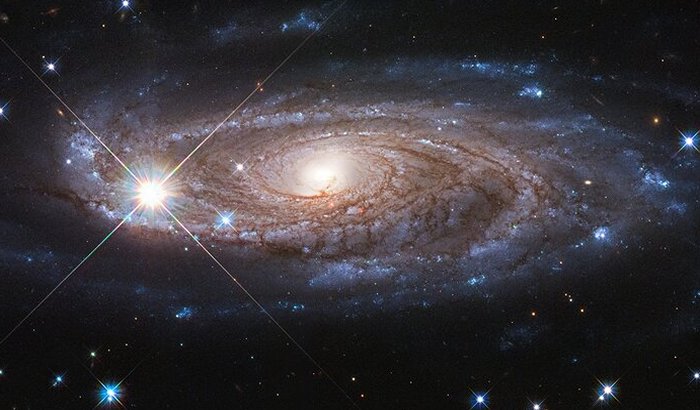Eddie Gonzales Jr. – MessageToEagle.com – Galaxy UGC 2885 may be the largest known in the local universe. It is 2.5 times wider than our Milky Way and contains 10 times as many stars.
The giant galaxy is located in the northern constellation Perseus and does not appear to be feeding on much smaller satellite galaxies, instead, it is starved of infalling gas.

“My research was in large part inspired by Vera Rubin’s work in 1980 on the size of this galaxy,” Benne Holwerda of the University of Louisville, Kentucky, who observed the galaxy with the Hubble Space Telescope, said in a press release.
“We consider this a commemorative image. The goal of citing Dr. Rubin in our observation was very much part of our original Hubble proposal.”
Holwerda nicknamed the giant galaxy “Rubin’s galaxy”, after astronomer Vera Rubin (1928–2016), who measured the galaxy’s rotation, providing evidence for dark matter that makes up most of the galaxy’s mass.
Despite its gigantic size, researchers are also calling it a “gentle giant” because it looks as if it has been sitting quietly over billions of years, possibly sipping hydrogen from the filamentary structure of intergalactic space. This is fuelling modest ongoing star birth at a rate of half that of our Milky Way.
A number of foreground stars in our Milky Way can be seen in the image, identified by their diffraction spikes. The brightest appears to sit on top of the galaxy’s disc, though UGC 2885 is really 232 million light-years farther away.
“It’s as big as you can make a disk galaxy without hitting anything else in space,” added Holwerda.
Did the monster galaxy gobble up much smaller satellite galaxies over time? Or did it just slowly accrete gas to make new stars?
“It seems like it’s been puttering along, slowly growing.”
Written by Eddie Gonzales Jr. – MessageToEagle.com Staff






